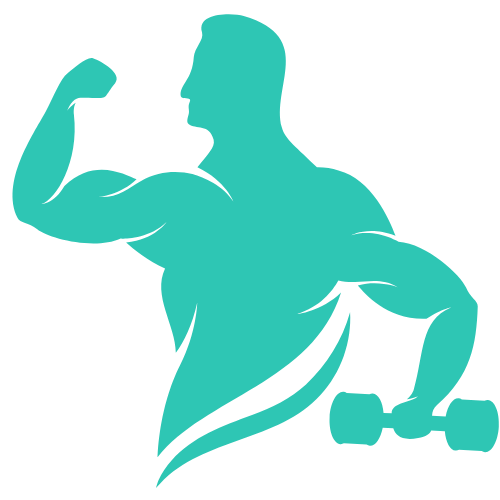Calisthenics for Beginners: Crafting Your 1st and Ultimate Workout Plan

Introduction
In the pursuit of physical fitness, there are numerous workout options available, ranging from weightlifting to more unconventional approaches. One such approach gaining popularity is calisthenics. Calisthenics is a form of exercise that utilizes one’s body weight to build strength, flexibility, and endurance. If you’re interested in exploring this exciting fitness journey, this article will guide you through the essential steps of getting started with a beginner’s workout plan.
I. Understanding Calisthenics
A. Definition
Calisthenics, also known as bodyweight exercise, refers to a fitness discipline that focuses on using one’s body weight as resistance to train various muscle groups. Unlike traditional weightlifting, calisthenics relies solely on the individual’s bodyweight movement, eliminating the need for additional equipment.
B. History of Calisthenics
The roots of calisthenics can be traced back to ancient Greece, where physical fitness and strength were highly valued. Greek soldiers and athletes would perform bodyweight exercises as a crucial part of their training routines. Over time, calisthenics has evolved and been adapted in various cultures, including gymnastics movements, freestyle bodyweight, and street workout.
C. Key Principles of Calisthenics
To achieve optimal results in calisthenics, understanding the key principles is vital. These principles include progressive overload, which involves gradually increasing the difficulty of exercises, muscle activation through proper form and technique, and functional movement patterns that mimic daily activities. By incorporating these principles into your workout, you’ll maximize the efficiency of your training sessions.
II. Assessing Your Fitness Level
A. Importance of Self-Assessment
Before diving into a calisthenics workout plan, it’s crucial to assess your current fitness level. Self-assessment allows you to determine your strengths, weaknesses, and areas that need improvement. This assessment will serve as a benchmark to track your progress as you embark on your calisthenics journey.
B. Physical Readiness for Calisthenics
Calisthenics requires a certain level of physical readiness to perform exercises safely and effectively. Factors such as joint mobility, balance, and muscular strength should be evaluated to ensure that your body is prepared for the demands of the training. Consulting with a healthcare professional or fitness trainer can provide valuable insights into your physical readiness.

A. Types of Goals
Setting clear goals is essential in any fitness journey, including calisthenics. Goals can be broadly categorized into strength-based goals, skill-based goals, and aesthetic goals. Strength-based goals focus on increasing the overall strength of specific muscle groups, skill-based goals aim to master advanced movements, while aesthetic goals revolve around improving muscular definition and body composition.
B. SMART Goal Setting
To ensure that your goals are achievable and measurable, employing the SMART goal-setting technique is highly recommended. SMART stands for Specific, Measurable, Attainable, Relevant, and Time-bound. By setting SMART goals, you’ll have a clear roadmap and a sense of direction throughout your calisthenics journey.
IV. Essential Equipment
A. Understanding Minimalistic Equipment
One of the appealing aspects of calisthenics is its minimalistic approach, requiring little to no equipment. However, a few essential items can enhance your training experience. Understanding the role of minimalistic equipment, such as resistance bands or pull-up bars, will allow you to choose the right tools to progress in your journey.
B. Essential Equipment Guide
When starting your calisthenics journey, there are a few key pieces of equipment to consider. These may include resistance bands, a pull-up bar, gymnastic rings, parallel bars, and a yoga mat. Each equipment serves specific purposes and targets different muscle groups. Familiarizing yourself with these essentials will help you make informed choices.
V. Creating Your Beginner’s Workout Plan
A. Importance of a Workout Plan
A well-structured workout plan is essential in any fitness regimen, including calisthenics. A beginner’s workout plan provides structure, ensures balanced training, and allows for gradual progression towards your goals. By having a plan in place, you’ll have a clear understanding of which exercises to perform, when, and how to progress over time.
B. Designing an Effective Workout Plan
-
- Warm-Up Exercises
-
- Dynamic stretches to increase body temperature and range of motion
-
- Joint mobility exercises to prepare your joints for the upcoming workout
-
- Light cardio activities like jogging or jumping jacks to elevate heart rate
-
- Warm-Up Exercises
-
- Primary Calisthenic Moves
-
- Push-up variations to target different muscles in the upper body
-
- Squats and lunges to engage the lower body
-
- Planks and hollow body holds for core strength
-
- Primary Calisthenic Moves
-
- Core Strengthening Exercises
-
- Leg raises and flutter kicks for lower abdominal muscles
-
- Russian twists and side planks to engage the obliques
-
- Hollow body rocks and L-sits for overall core activation
-
- Core Strengthening Exercises
-
- Cool-Down and Stretching
-
- Static stretches to improve flexibility and release muscle tension
-
- Deep breathing exercises to promote relaxation and recovery
-
- Cool-Down and Stretching
VII. Execution Tips for Beginners
A. Starting Slow and Building Progression
As a beginner, it’s crucial to start with exercises that match your current fitness level. Gradually increase the difficulty and volume of your workouts as you gain strength and confidence. Rushing into advanced movements or excessive training intensity increases the risk of injury and burnout. Remember, consistency and progression are key to long-term success.
B. Correct Form and Technique
Maintaining proper form and technique in calisthenics exercises is vital for injury prevention and optimal muscle activation. Focus on mastering the correct form before progressing to more challenging variations. Pay attention to posture, alignment, and muscle engagement, seeking guidance from instructional videos or a qualified coach if needed.
C. Importance of Rest and Recovery
Incorporating rest and recovery days into your workout routine is crucial for muscle repair and growth. Overtraining can lead to plateaus in progress and increased risk of injury. Listen to your body and allow sufficient time for rest between workouts. Adequate sleep, nutrition, and stress management also contribute to your overall recovery and performance.

A. Overtraining and Injury Risks
Overenthusiasm and lack of proper rest can lead to overtraining, which hinders progress and increases the risk of injuries. Pushing beyond your limits without giving your body time to recover can result in burnout and setbacks. Remember to find a balance between training and rest for sustainable results.
B. Neglecting Proper Nutrition
Calisthenics places demands on the body, requiring adequate nutrition to fuel workouts and support muscle recovery. Neglecting proper nutrition can impede your progress and hinder strength gains. Focus on consuming a well-balanced diet with sufficient protein, carbohydrates, and healthy fats.
IX. Progress Tracking and Tracking Tools
A. Importance of Monitoring Progress
Tracking your progress provides tangible evidence of your improvement and serves as motivation to continue your journey. Regularly monitoring progress allows you to identify areas that need improvement or adjustments in your training plan.
B. Popular Progress Tracking Tools
There are various tools available to facilitate progress tracking, including workout journals, fitness apps, and wearable devices. These tools help record workout details, track repetitions, monitor time under tension, and measure other key metrics. Choosing a suitable tracking tool can simplify your progress monitoring process.
X. Expanding Your Calisthenics Routine
A. Advanced Calisthenic Moves to Aim For
As you progress in your journey, you may consider incorporating advanced movements into your routine. Advanced calisthenic moves such as muscle-ups, handstands, and human flags challenge your strength, balance, and body control. Proper progression and consistent practice are crucial when attempting these more advanced exercises.
B. Incorporating Strength Training
To supplement your calisthenics routine, incorporating traditional strength training exercises can offer additional benefits. Exercises such as deadlifts, barbell squats, and bench presses can enhance overall strength and muscle development, further supporting your progress.
XI. Building a Balanced Calisthenics Lifestyle
A. Combining Calisthenics with Cardiovascular Exercise
To achieve a comprehensive fitness routine, combining calisthenics with cardiovascular exercise is beneficial. Including activities like running, swimming, or cycling improves cardiovascular health, enhances endurance, and maintains overall fitness levels.
B. Nutrition Tips for Optimal Results
Optimizing your nutrition is key to achieving optimal results. Prioritize consuming whole, nutrient-dense foods to support your fitness goals. Adequate protein intake is vital for muscle recovery and growth, while carbohydrates serve as an energy source for intense workouts. Balancing macronutrients and consuming ample fruits, vegetables, and healthy fats will contribute to your overall well-being.
XII. Overcoming Plateaus and Challenges
A. Identifying Plateaus in Progress
During your calisthenics journey, you may encounter plateaus where progress seems stagnant. Identifying plateaus is an important step in overcoming them. Recognize when your workouts have become routine or when you’re no longer seeing improvements in performance or physique.
B. Strategies to Overcome Challenges
To overcome plateaus and challenges, consider implementing strategies such as adjusting training intensity, varying exercise selection, incorporating new training methods, or seeking guidance from qualified coaches or trainers. Consistent dedication, staying open to new approaches, and embracing challenges will fuel your progress.
XIII. Safety Considerations and Injury Prevention
A. Warm-Up and Injury Prevention Techniques
Prioritizing warm-up exercises and injury prevention techniques is crucial in minimizing the risk of injuries. Dynamic stretching, mobility exercises, and activating targeted muscle groups before your workout help prepare your body for intense movements. Additionally, maintaining proper form and using equipment correctly are essential safety measures.
B. Seeking Professional Guidance
While calisthenics can be performed independently, seeking professional guidance can provide valuable insights and ensure proper technique. Consulting with a certified coach or personal trainer can help address specific concerns, tailor your workout plan to your needs, and reduce the risk of injury.

A. Importance of Mental Strength
Calisthenics not only challenges your physical capabilities but also requires mental strength and resilience. A positive mindset and strong mental focus contribute to perseverance, discipline, and overcoming obstacles during your fitness journey. Developing mental strength empowers you to push through challenging workouts and embrace the process of continuous improvement.
B. Practicing Mindfulness and Persistence
Incorporating mindfulness techniques, such as deep breathing, meditation, or visualization, can aid in maintaining focus and reducing stress during workouts. Cultivating persistence and resilience ensures that you stay committed to your goals even when facing setbacks or temporary obstacles.
XV. Staying Motivated on Your Calisthenics Journey
A. Celebrating Milestones and Achievements
Recognizing and celebrating milestones and achievements along your calisthenics journey is essential for maintaining motivation. Whether it’s achieving a new personal record, perfecting a challenging movement, or hitting a specific physique goal, acknowledging your progress fuels continued dedication.
B. Finding Support and Inspiration
Surrounding yourself with like-minded individuals, whether through online communities or local fitness groups, provides valuable support and inspiration. Engaging with a community that shares your passion for calisthenics can offer guidance, encouragement, and a sense of camaraderie.
XVI. Summary
Embarking on a calisthenics journey offers a unique and rewarding approach to achieving physical fitness. By understanding the principles, setting realistic goals, designing an effective workout plan, and prioritizing safety and recovery, you can embark on a successful fitness journey. Combine this with perseverance, mental strength, and a supportive community, and you’ll unleash your potential in breaking boundaries with calisthenics.
XVIII. Conclusion
Calisthenics offers a refreshing and effective way to build strength, flexibility, and endurance while breaking the mold of traditional fitness. By understanding the fundamentals, setting clear goals, designing a tailored workout plan, and prioritizing safety and recovery, you can start your calisthenics journey with confidence. Embrace the challenges, celebrate your progress, and enjoy the exciting possibilities that await as you push your limits.



